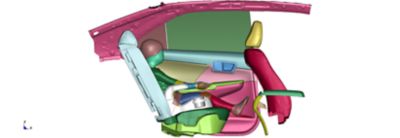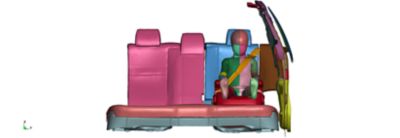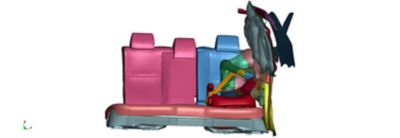-
-
Accédez au logiciel étudiant gratuit
Ansys donne les moyens à la prochaine génération d'ingénieurs
Les étudiants ont accès gratuitement à un logiciel de simulation de classe mondiale.
-
Connectez-vous avec Ansys maintenant !
Concevez votre avenir
Connectez-vous à Ansys pour découvrir comment la simulation peut alimenter votre prochaine percée.
Pays et régions
Espace client
Support
Communautés partenaires
Contacter le service commercial
Pour les États-Unis et le Canada
S'inscrire
Essais gratuits
Produits & Services
Apprendre
À propos d'Ansys
Back
Produits & Services
Back
Apprendre
Ansys donne les moyens à la prochaine génération d'ingénieurs
Les étudiants ont accès gratuitement à un logiciel de simulation de classe mondiale.
Back
À propos d'Ansys
Concevez votre avenir
Connectez-vous à Ansys pour découvrir comment la simulation peut alimenter votre prochaine percée.
Espace client
Support
Communautés partenaires
Contacter le service commercial
Pour les États-Unis et le Canada
S'inscrire
Essais gratuits
ANSYS BLOG
August 5, 2022
Steering Car Seat Development in a Safer Direction with Simulation
Kids require a lot of special gear, and parents’ confusion over what to buy often begins even before a newborn baby leaves the hospital. Child safety is a huge focus for most parents-to-be, and car seats are at the top of the list. It’s not surprising — the Centers for Disease Control and Prevention (CDC) identifies motor vehicle crashes in the United States as a leading cause of death for children ages 12 and younger1.
With the baby car seat market projected to grow by $1.68 billion between 2021 and 20222, vehicle and car seat manufacturers are closely following consumer preferences to stay ahead of their demands for safety, convenience, and affordability. Child seats are evolving all the time — today’s car seat designs are completely different from what they were 15 years ago. Overwhelmingly, parents want seats that are safer, lighter, easier to use, and more portable, which requires additional testing of materials and new seat design.

Simulation of child in car seat before deceleration begins.
Where Car Seat Research Gets its Chops
To address these challenges, researchers at the Center for Injury Research and Prevention at Children’s Hospital of Philadelphia (CHOP) are using Ansys LS-DYNA simulation software for collision simulations to better understand how to optimally protect children in car seats.
“The mission of our center primarily is to pursue innovative solutions to prevent injuries in children, youth, and young adults through rigorous research and collaboration with industry, policymakers, and governmental agencies to improve product design policies and educate parents and caregivers about correct child seat use,” says Jalaj Maheshwari, MSE, Research Project Engineer and a Lead Project Investigator at CHOP. “Ansys simulation helps support the computational modeling efforts in the safety research we’re conducting.”

Physical testing using a crash dummy to verify simulation results.
Maheshwari and his team are tasked with assessing car seat safety systems designed for children across a wide range of ages, which increases the complexity of testing. Pediatric occupants are a particularly challenging population to model. There isn’t a set anthropometry, or human body measurement, that you can use for all cases. The algorithm inputs of an 18-month-old child are completely different from that of a 3-yearold, which are completely different from that of a 6-year-old, and so on. Restraint systems change dramatically during the birth-to-11- year trajectory as a child grows, moving from rear-facing to forward-facing seat, and finally a belt-positioning booster seat.
Traditionally, children’s car seats have been evaluated using physical crash tests by securing a child-sized crash test dummy onto a properly installed car seat. The test bench, or sled, is then accelerated and decelerated at various pulses that mimic different crash scenarios to test occupant movement and injury potential. During testing, all the elements, from the dummy positioning, harness and chest clip positioning to harness tightness, must be in accordance with federal testing standards.
Testing helps ensure that the child seat provides adequate protection by ensuring the occupant surrogate or crash test dummy complies with the injury thresholds, or the protocols identified by the National Highway Traffic Safety Administration (NHTSA), Consumer Reports, and other regulatory or consumer information bodies.
These physical tests are expensive, which makes investigating multiple crash scenarios economically challenging for all involved. While physical testing is an essential aspect of safety assessment and cannot be eliminated, manufacturers have discovered that combining it with simulation can speed up restraint assessment and enhance development of car seats that perform well in all types of crashes.

Simulation of a child passenger in a car seat before a side impact collision.

Simulation of a child passenger in a car seat during a side impact collision.
You can't Always Predict ... or can You?
More often than not, children are fidgety, and don’t necessarily sit straight up and look forward all the time. Further, research by CHOP and others indicates that a large percentage of child restraint systems are installed with at least a minor user error3,4, like loose belts, unused or out of position chest clips, and so on. Using LS-DYNA enables the simulation of real-world, in-vehicle scenarios, such as different seating postures where the occupant is leaning forward or leaning inward5, and installation errors. Other test-worthy scenarios — including pre-crash maneuvers such as swerving or sudden braking enabled by advanced driver assistance system technologies — can also dramatically change the child’s position in the car seat.
For researchers at CHOP, it’s important to assess what happens when a child is in as many positions as possible when a crash occurs. Will the seat belt slip off, and if it does, is there a way to prevent it from happening? Or is an advanced restraint system mechanism needed that pulls the seat belt in such a way that it provides a better fit on the child in the event of a crash?
Move Over, Dummy
Anthropomorphic test devices or crash test dummies are essential tools to assess injury and restraint performance in physical crash tests. While crash test dummies are humanlike, they’re not exactly human. To advance safety, it’s important to understand how an actual human body behaves. Using LS-DYNA with validated virtual human body models, CHOP can simulate different crash conditions with child models of varying anthropometries6. To do this, the team must first develop a 3D computer-aided design (CAD) model of the child seat and the vehicle seat/test bench from specific dimensions according to engineering data. After that, the finite element (FE) model is generated by meshing each component and assigning it appropriate material properties. The individual FE models of the child, child seat, and vehicle seat/test bench are brought into one environment, positioned as necessary, restrained with seatbelt FE models, assigned boundary conditions, and then loaded into a processor to run the crash scenario being investigated.
Using a virtual human body model during simulation requires a variety of mesh sizes within different boundary conditions. Researchers evaluate their meshes and assign them to each body part. This activity often involves finer meshing in certain areas of the body to maintain the features and the complexities of the geometry they are using.
Human body models are a key component of Maheshwari’s simulations to help evaluate how safety aspects of the child restraint could change across a wide range of child age and size. The resulting data enable vehicle safety system and child restraint design for children of all sizes and ages, and also help policymakers shape policy and testing standards that effect positive change on child safety.
Ansys LS-DYNA: A Tool for Academic Research
CHOP uses Ansys LS-PrePost within LS-DYNA to pre-process, submit simulations, and postprocess their results. Maheshwari starts by bringing in individual models he has created meshes for with specific material properties. The seating environment is defined, and LS-PrePost is then used to position the occupant in the seating environment, which could be a full vehicle or a test sled with the child in an age-appropriate child seat.
Different types of pre-simulations run in LS-DYNA help position the occupant and deform or compress the seat to reflect the physical world. The child seat and human body model are positioned in the vehicle environment and adjusted in accordance with gravity. Once those models are settled, the team restrains the child seat and child to the vehicle, applies the desired boundary conditions of the crashes, and runs the simulations.
In the physical world, says Maheshwari, vehicle crashes are over in an instant, lasting 120 milliseconds; however, simulation times can take anywhere from two hours to seven days depending on the complexity of the model they are using. Once the simulation is complete, the data can be exported for further analysis.
Curbing Research Costs, not Testing
With all of this testing, costs can really add up, which is what makes simulation an excellent option for academic research. Ansys supports Maheshwari’s research by making licenses more affordable for the team. An Ansys license doesn’t limit the team to how many tests they can run, but to the life of the license. Using LS-DYNA, they can run as many parametric simulations as they wish. Right now, they are at 100+ full-impact simulations and counting using a virtual human body model — an achievement that is economically prohibitive and time consuming with a physical sled test.
References
- “Child Passenger Safety: Get the Facts”, Centers for Disease Control and Prevention (CDC), April 14, 2022.
- “Baby Car Seat Market Forecast and Growth Through COVID-19 Competitive Landscape, Segments, Key Regions Overview by 2022 to 2025”, MarketWatch Press Release, March 16, 2022.
- Arbogast, Kristy B., Morris, Shannon D., Durbin, Dennis R., and Winston, Flaura K., The influence of harness type on child restraint system misuse - PubMed (nih.gov), Annu Proc Assoc Adv Automot Med. 2002;46:261-9. PMID: 12361512.
- Microsoft Word - Final Report DOT HS 809 671.doc, nhsta.gov., January 5, 2004.
- Maheshwari, Jalaj, Shreyas Sarfare, Clayton Falciani, and Aditya Belwadi. “Pediatric occupant human body model kinematic and kinetic response variation to changes in seating posture in simulated frontal impacts–with and without automatic emergency braking.” Traffic injury prevention 21, no. sup1 (2020): S49-S53.
- Belwadi, Aditya, Shreyas Sarfare, Sophie Tushak, Jalaj Maheshwari, and Srihari Menon. “Responses of the scaled pediatric human body model in the rear-and forward-facing child seats in simulated frontal motor vehicle crashes.” Traffic injury prevention 20, no. sup2 (2019): S143-S144.
- Beillas, Philippe, Chiara Giordano, Victor Alvarez, Xiaogai Li, Xingjia Ying, Marie-Christine Chevalier, Stefan Kirscht, and Svein Kleiven. “Development and performance of the PIPER scalable child human body models.” In 14th International Conference on the Protection of Children in Cars, pp. 19-p. 2016.